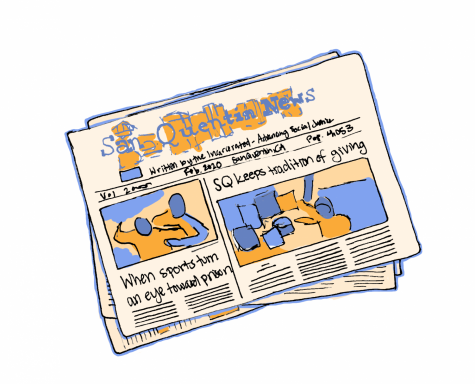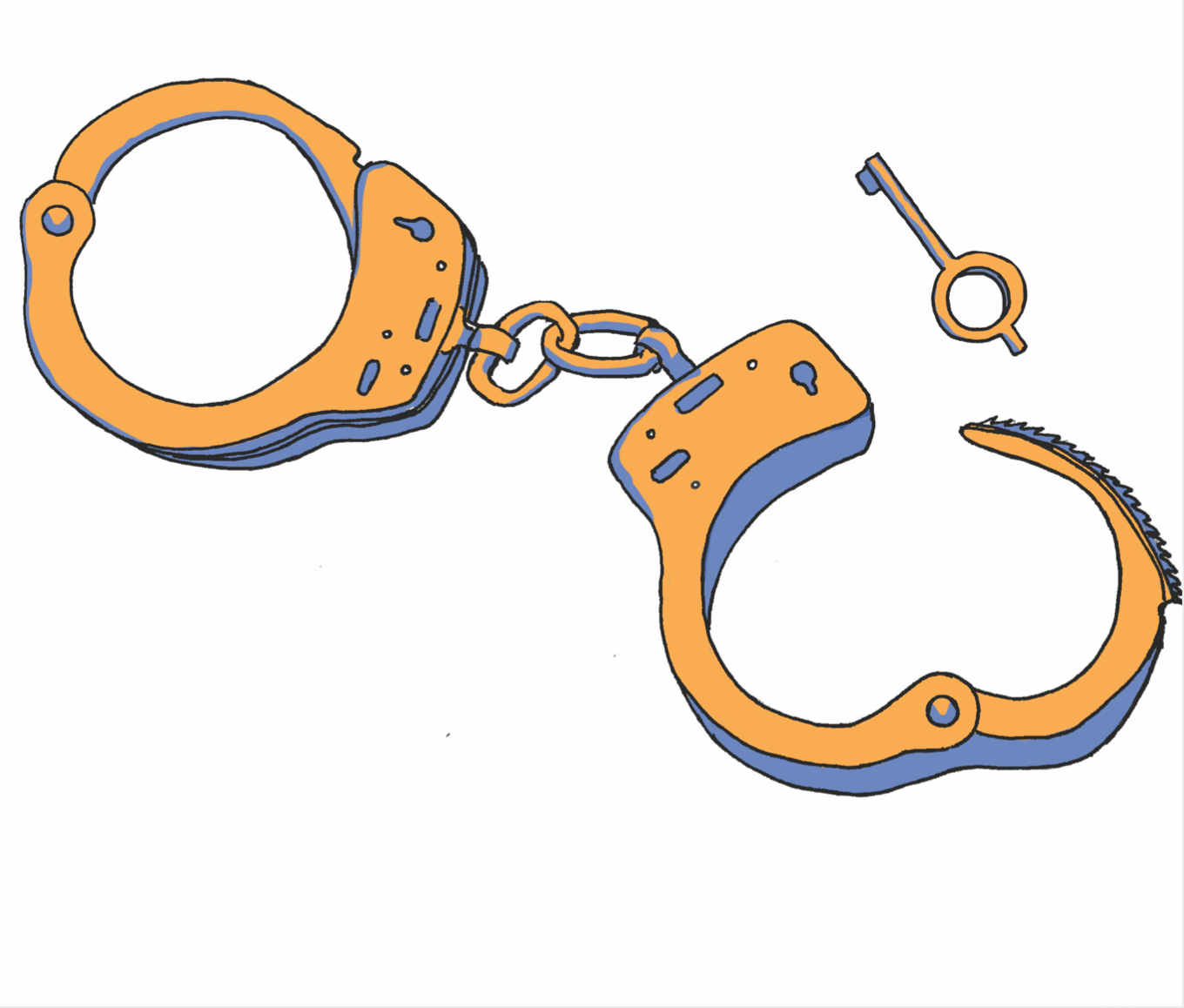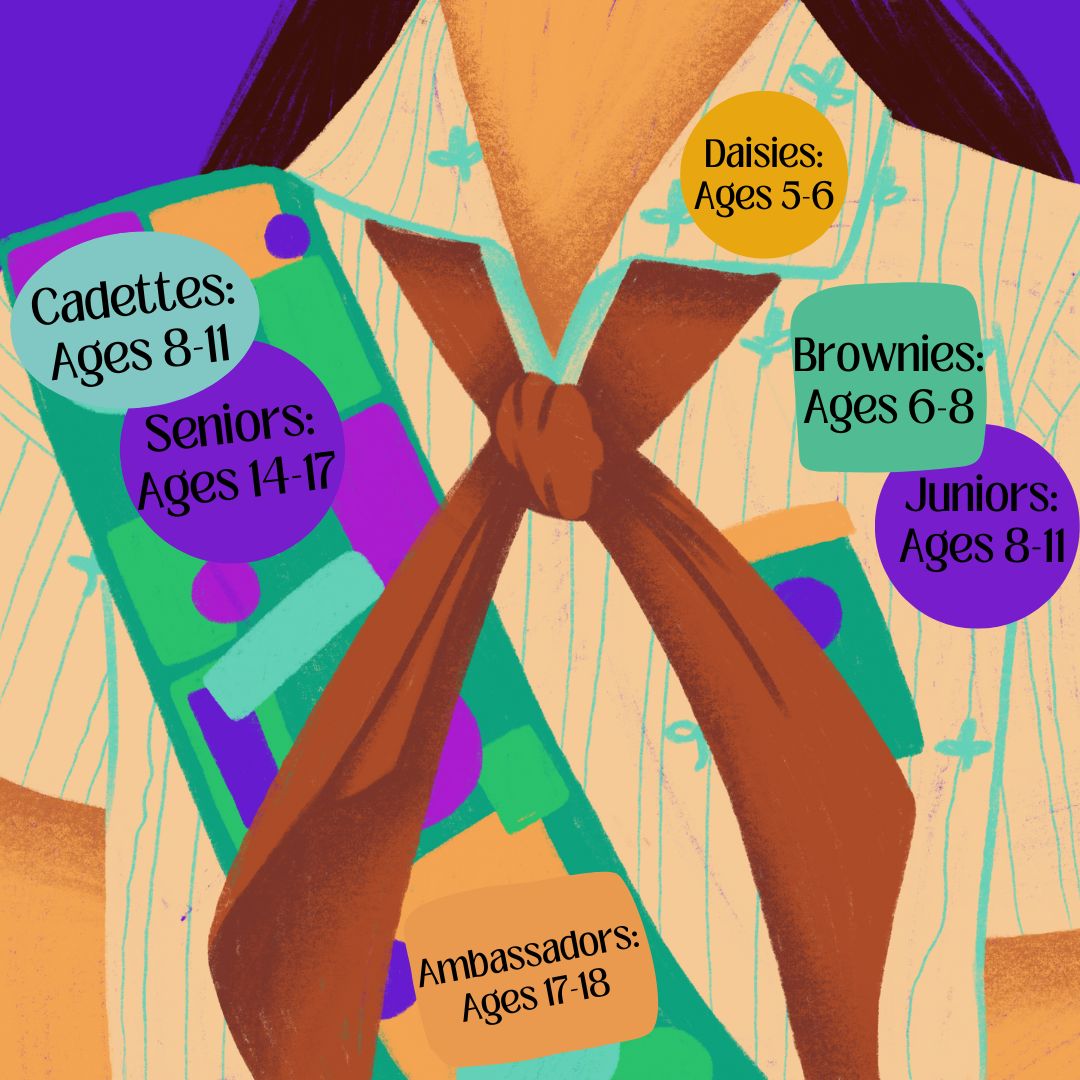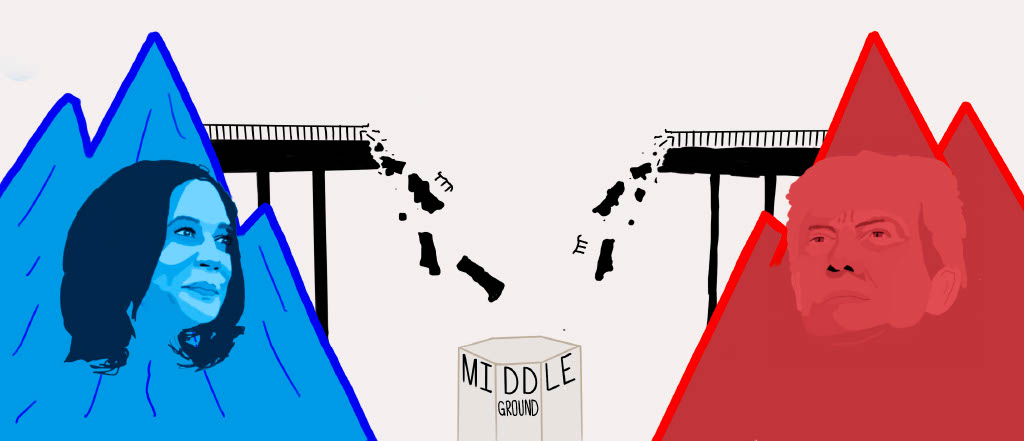“Learning to forgive is much more useful than merely picking up a stone and throwing it at the object of one’s anger, the more so when the provocation is extreme. For it is under the greatest adversity that there exists the greatest potential for doing good, both for oneself and for others.” –– 14th Dalai Lama
Completing the Circle is a multi-edition feature on restorative justice practices in the Bay Area. Restorative justice is a process in which the goal is not to punish the defendant, but to repair the harm done by their crime for all parties involved. In this series, we will focus on different programs in each edition that work to incorporate a restorative approach into criminal justice.
San Quentin
“Returning people to society healthy is much more complicated and complex than just one answer,” Public Information Officer Lt. Sam Robinson said. “It’s really challenging because the [person] has to make up in their mind that they want a better day. You can’t just force them to want a better experience. Once [they] get to that point…then [the prison] has to have opportunities for them.”
As a result of the over 500 percent increase in the U.S. prison population throughout the past 40 years, there are 2.3 million people incarcerated in the country, according to the Prison Policy Initiative. San Quentin State Penitentiary, a level four (highest security) prison, currently holds 4,050 individuals as of March 4, with over 700 on death row and the rest classified as the “general population.”
San Quentin hosts about 3,000 volunteers who help with a range of programs since 2016, according to the Marshall Project. The aims of these programs vary from education to fitness to general well-being and more. This article will feature programs that use media and education to give incarcerated individuals agency and fulfillment, as well as real-world skills and specializations.
Media
“In prison, traditionally there are very few things that empower you, to be a better man or to empower and inspire you to do greater things. I think that’s one thing the media center does—it has inspired people to be better people than they were,” Robinson said.
The media center sits in the back of San Quentin, behind the hospital, Death Row, the cell blocks and the yard. There, incarcerated individuals are able to explore their storytelling abilities through print, video and audio mediums.
According to their website, the San Quentin News staff consists of 12-15 incarcerated people who work with volunteers to create a 24-page monthly paper. The paper came in and out of existence from its establishment in 1940 until 2008, the year of its most recent reinstatement. Through the paper, the staff strives to share the stories of people behind bars that are not typically seen from the outside.
“While the mainstream media emphasize the latest violent incidents occurring at Folsom, Soledad or Corcoran State Prisons, San Quentin News covers stories about the 73-year-old woman or man who has earned a GED, maybe even a college education,” the San Quentin News website says.
Associate Editor Kevin Sawyer is currently serving a 48-years-and-four-months-to-life sentence, and says he is grateful for the opportunities he has gotten through San Quentin, which is the only prison in the country with a media center.
“This prison is not like any other prisons that I’ve ever been at,” Sawyer said. “The message was really clear to me when I went through the criminal justice system…that I was sentenced to be punished, not to be rehabilitated,” Sawyer said. “But then when I came to San Quentin, all of a sudden I saw an entirely different atmosphere. There were more opportunities, and all of a sudden this whole notion about rehabilitation started to take shape in my mind.”
Serving his sentence at other California state prisons before arriving at San Quentin in 1998, Sawyer joined the San Quentin staff after a change in his security clearance required him to get a job.
Sawyer sees the San Quentin News as a voice for those inside the prison and hopes that their stories can give people a more positive perspective on prisoners, especially with how popular media portrays criminals.
Robinson echoes Sawyer’s sentiments, stating how important he believes the media center is for prisoners.
“I think it’s powerful to own your own story, to be able to tell the story about who you are, where you were in the past, how you got there, how you evolved and who you are today,” Robinson said.

Sawyer will be up for parole in 2023, 15 years earlier than his original sentence, due to legislation passed after his sentencing. He plans to continue working for The San Quentin News during the rest of his time at the prison.
A newer edition to the media center is the podcast Ear Hustle. Five currently incarcerated men, formerly incarcerated Earlonne Woods and a volunteer named Nigel Poor work together to create a podcast that has earned tens of millions of streams.
According to co-producer and co-host Rahsaan “New York” Thomas, who is currently incarcerated, many members of the team share a favorite episode: season four’s “Tell Christy I Love Her.” Outlining the reconnection of a man and a police officer who were involved in each other’s lives years before (no spoilers!), the story represents the program’s overall mission of bringing “the daily realities of life inside prison shared by those living it, and stories from the outside post-incarceration,” as quoted from their website.
The podcast is currently in its fifth season, with its next episode coming out April 29.
Another media center program, FirstWatch, was also established in 2017. A subset of the larger filmmaking outlet of the center, their mission is to humanize those incarcerated at San Quentin through the medium of film; according to their website, the film series analyzes the abilities of rehabilitory and accountability-gaining practices to heal and restore those within the prison.
FirstWatch’s films can be found on RestoreCal’s website.
There are many challenges the members of the media programs face, both in the idea-creation, production and publishing process. Their main logistical setbacks of not having access to the internet and having to receive approval on ideas they would like to pursue are accompanied by the obstacle of public intolerance.
“I’ve heard people on the news say that inmates don’t deserve a voice, and if anybody feels that way, then there’s this thing called the United States Constitution. It’s been ratified 27 times––make the 28th one and take away the First Amendment, but that’s going to apply to [people outside prison], too. Not just us,” Sawyer said.
Although the programs in the media center have made strides toward creating more rehabilitative sentences, Sawyer believes the system still has a ways to go.
“You have to remember that the prison system was operated a certain way for decades, and so even when the R [for ‘rehabilitation’] was placed on the CDC [California Department of Corrections], it took a long time for the department to turn that around. The name wasn’t going to turn the ship around,” Sawyer said.
Education
“Education is the only thing that gives you ultimate control, understanding and power in your life and recognition based on [something positive],” formerly incarcerated Carlos Flores said. “[Education] is the only thing offered in prison that comes from a positive angle only. You always had [a brain], you just didn’t know it.”
San Quentin offers programs such as the Prison University Project (PUP) and the Academic Peer Education Project (APEP) to give the incarcerated credentials that will help them with the job market in the real world. Diane Kahn, director of APEP, began volunteering with the program three years ago. Since then, she has provided over 15 men with teacher education that they then use to help other inmates earn GEDs.
According to Kahn, programs that have inmates teaching other inmates are successful because of their unique student-teacher relationship.
“Our perspective is that [inmates] can learn quite a bit more from a peer who is living in the same kind of situation they are,” Kahn said. “It’s really enlightening to see how much of a person they turn into and what they find in themselves. They had never seen anybody that cared about them before or their education…so for them to understand the whole world has opened up for them is really, really engaging.”
While many of the educational programs at San Quentin revolve around academics, organizations such as the Insight Prison Project (IPP) have broken the traditional mold for incarcerated education. According to their website, the IPP’s mission is to “bridge the gap between punishment and parole through rehabilitation, allowing prisoners to break the cycle of incarceration, stay out of prison, and become productive community members.” At the same time, according to IPP’s executive director Leonard Rubio, the program gives victims the platform to express their feelings and thoughts on the crime committed against them.
The IPP’s core program is called “Victim/Offender Education Group” (VOEG), an 18-month curriculum designed by survivors of crimes, incarcerated perpetrators and licensed mental health therapists. Rubio finds that VOEG fills in the gaps of the issues left unaddressed by the traditional criminal justice system.
“During the criminal justice process, what actually [happened regarding the crime] may not ever come up. Okay, somebody died and this person killed him, but it doesn’t get down into necessarily why it happened and specifically how it happened,” Rubio said. “By the time [prisoners] get to [VOEG], oftentimes they’ve never even talked about their crime with other people.”
In order to hold the perpetrator accountable for their actions while simultaneously addressing deep-rooted emotional issues, a series of questions are asked within the VOEG meetings.
“One of the first things we ask is what happened that day so the [perpetrator] can talk about the different situations that led up to it. [They’re asked] what was the impact on the victim so that [the prisoner is] now being accountable for the actions they took,” Rubio said. “What was the impact on the community? What was the impact on your family and friends? What was the impact on yourself? Finally, what do you need for your own personal healing?”
Throughout Robinson’s years working at San Quentin, he has been able to witness the transformation of many individuals participating in victim-offender dialogues.
“Those guys who looked at their victims as an object, when you sit them in a room with someone else who’s been victimized and lost a loved one or had their virtue taken from them, when the guy listens to that person explain how that event changed their life and all the grief that they went through––I think at that point, that’s the first time they realized the impact the crime had on the guy’s mother, on his wife, on his children, his friends, the surrounding community, the victim themselves,” Robinson said. “If you have any type of empathy in you, it has an impact when you know that you did that to someone, you cause someone to have those types of feelings, to have that type of persistent fear in their life, or loss. For many guys, that’s the beginning of working really hard to be a different person than that day, than what led them to prison.”
The movement toward implementing more restorative justice programs like VOEG within prisons is not specific to perpetrators and prison officials. Rather, crime-surviving victims are increasingly preferring restorative justice over traditional criminal justice methods. According to The National Survey of Victims’ Views from the Alliance for Safety and Justice, 60 percent of victims across the country believe in rehabilitation over punishment.
While it can be a difficult task to acknowledge one’s negative impact on another in programs like VOEG, Rubio has also found that this process induces profound changes in its participants. As a result, according to Rubio, only five in 1000 of these individuals return to prison after release.
“When people make the decision to start healing themselves, to look at those traumas and understand how those traumas impacted them, they can understand how [to] move forward without holding onto the…pain that lived through them,” Flores said. “Then not only are they able to heal themselves, they’re able to start healing the people around them.”















